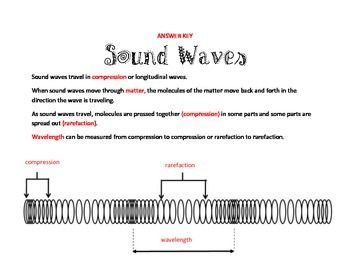How Is Wavelength Determined for a Longitudinal Wave
The wave velocity is the speed at which a wave moves with particles making oscillations about their mean position. For a medium with high compressibility the velocity will be less.

Understanding Tesla S Inventions Page 1 Longitudinal Wave Ultrasound Physics Physics And Mathematics
Where f is the wave frequency or the number of waves that pass through a point in a given time.

. Shallow-water waves move with a speed equal to the square root of the product of. From 1000 ns the P-wave was almost undetected but the S-wave 1st and 2nd surface waves can be observed until 1900 ns. Introduction and Theory A sound wave is a longitudinal wave in which the wave oscillates along the direction of propagation.
λ The distance between two successive crests or troughs in a wave. There are also hybrid modes of HE and EH type having a non-zero longitudinal components of both electric and magnetic field. A single frequency wave will appear as a sine wave in either case.
Waves travel at different speeds in different media. Adiabatic compressibility of a fluid is. Waves may be graphed as a function of time or distance.
It can spin in a right hand sense about its direction of motion or in a left hand sense. Table 1 makes it apparent that the speed of sound varies greatly in different media. The speed of sound in a medium is determined by a combination of the mediums rigidity or compressibility in gases and its density.
This wave vanished fast and its location on the interface is difficult to be determined after 900 ns. The formula of the waves velocity is given by v fλ. The relation of frequency and wavelength in a radio wave traveling in vacuum or air is.
A photon can have one of two possible values of spin. A sound wave emanates from a source vibrating at a frequency f propagates at V w and has a wavelength λ. From the distance graph the wavelength may be determined.
Calculation of LP Modes. Because it has such a long wavelength a tsunami is a shallow-water wave. A tsunami can have a wavelength in excess of 100 km and period on the order of one hour.
The 2nd surface wave is characterized as a tangent line to the S-wave front with one end is on the interface. As a wave enters a different medium the waves speed changes. The speed of a wave is determined by the type of wave and the nature of the medium.
For a traveling wave of speed v frequency f and wavelength λ the following relationship holds. We have the velocity v of a wave is related to its wavelength λ by the relation where f is the frequency of the wave. The wave equation for the complex electric field profile Er φ in.
Right circularly polarized radio. From the time graph the period and frequency can be obtained. The polarization of radio waves is determined by a quantum mechanical property of the photons called their spin.
Then The velocity of ultrasound is determined principally by the compressibility of the material of the medium. The term tidal wave is more frequently used for such a wave but it is a misnomer for the wave has no connection with the tides. That case of not weakly guiding fibers applies for example to nanofibers where a glassair interface provides the waveguide function.
From both together the wave speed can be determined. A higher frequency causes a shorter wavelength and greater energy. Speed is a measure of the distance a wave travels in an amount of time.

Sound The Science Of Waves How They Travel How We Use Them Physics Lessons Ap Physics Physics Classroom

Sound Longitudinal Wave Notes Longitudinal Wave Waves Compression Wave

The Wave Components Of Longitudinal Waves Is Broken Down Into Three Separate Parts Longitudinal Wave Ap Physics Earth And Space Science
No comments for "How Is Wavelength Determined for a Longitudinal Wave"
Post a Comment